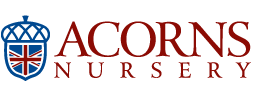In a society where technology is used both at home and at work, finding a balanced way to provide small opportunities to explore and promote digital skills is essential. When technology is introduced in a controlled way in the educational environment and used in a specific and concise manner, it can support and achieve goals set in early education and pre-school learning. Currently, the question is no longer whether we should introduce technology in early childhood education, but when and how to do it in order to truly improve the child’s learning experience.
The world is moving fast and technology is constantly evolving, and today’s preschoolers are digital natives. We must recognize these changes and respond to the demands of the present, as well as the future needs of the children, in order to prepare them for future challenges and success. Certainly, the environment in which a child grows up today is different from that experienced by parents, and technology is an excellent way to complete the child’s educational process. The implementation of technology linked with traditional activities such as outdoor play and tactile learning, such as wooden blocks and sensory baskets, allows children more opportunities to get involved, communicate and explore.
Within First7 Training Center, we constantly organize sensory playdates for babies. The themes are varied, and the objectives are specific. For example, in the most recent workshop, Texture and colour, we exercised hand muscles in modelling textures such as “floury sand”, but workshops such as the Musical Acorns also include the technological component: microphones, digital recordings, CD players.
Learning takes place when the child is engaged in the educational process
While navigating this digital age, we are seeking for healthy ways to introduce technology to young children, but we need to keep in mind that today’s preschoolers are already digital natives. They have been raised surrounded by technology and are familiar with it from an early age. The new digital media has transformed the creation of educational content for children, who can now watch a lion in its natural habitat, rather than read about it or see a static image, interact with the numbers on the screen, can draw and hear different sounds.
In Acorns nurseries, we believe in the power of technology to challenge and motivate children, to expand their perception of the world. That is why technology is part of the learning process, in accordance with our educational objectives. Programmable toys such as “Bee-bots”, “Roamers” or “Pixies” are suitable for children from the age of three. In the nursery, we attach markers to create different shapes and designs as they move.
Technology enhances social interaction skills
Access to technology should neither harm nor interfere with the child’s social development. In contrast, the technology used in early education should support collaborative learning environments and thus enrich children’s interactions. An essential advantage of using technology in early childhood education is that, when used correctly, it helps to improve social interaction skills. Technology can be used in collaboration with others, and this gives children the opportunity to share ideas. Therefore, teachers can incorporate interactive solutions, specially designed for the educational environment. An example is walkie talkies. We explain to the children how to use them, what buttons they have to press in order to talk and to listen, making them acquainted with the roles of transmitter and receiver.
Technology develops the child’s learning abilities
Using the right technology can enhance the cognitive and social skills of young children. For example, occasionally you can use a projector screen. Young children love games and engaging activities and are especially attracted by vivid colours and animation features.
This enhances their thinking and helps them develop skills such as their observation spirit. Animated videos make it easier for children to get involved, learning becomes easier, organic. Using technology in early education makes learning a fun and enjoyable process. For technology to be valuable in early education, it must provide perspective to children in order to acquire the skills that are needed in school. Our vision is to use resources and tools that the child can handle with a certain level of independence, resources introduced in natural learning contexts – play areas, cooking, exploration – in order to consolidate and stimulate the experience, and not only to acquire manoeuvring or operating skills.
In general, parents are concerned about the time their children spend in front of a digital screen, but just as important is to analyze the content and context in which they use technology. The efficient use of technology in education has transformed the educational process and created more opportunities for educators and teachers.
During the Early Years Conference, held on November 6-8, in Bucharest, six early education specialists addressed the topic Technology and development of mathematical intelligence. Martin Bailey, a specialist in the use of technology in early and primary education, shared a number of examples of educational toys and applications by which children between the ages of 3 and 10 can easily learn concepts related to ICT (Information and Communications Technology).
These include Helicopter rescue, Block a doodle doo, Path puzzle, Oscar’s pizza or Code a pillar. Their use develops early coding skills for children, logical reasoning and computational thinking.
When it comes to babies, toys will include everything that allows the child’s action to receive an answer, intentionally or accidentally.
The Early Years Conference is an initiative of the Acorns Foundation, through FIRST7 Training Center for parents and educators, whose aim is to provide the educational staff with practical teaching solutions, tailored to the needs of the 3rd-millennium child. The Early Years Conference brings annually to Romania international early education experts that present new concepts and address topics that are essential in aligning the Romanian preschool education system with the best performing international models.
